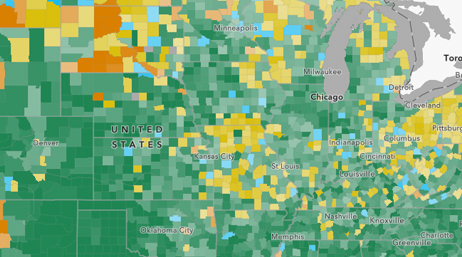
Learn about your community using ACS layers
Governments are seeking to eliminate inequities on the basis of race, gender, socioeconomic status, sexual orientation, disability status, and more. Discover how GIS solutions foster greater understanding and empower equitable action.
Esri's Social Equity Analysis solution helps governments assess where lack of access to resources exists, who is impacted, and where to intervene.

Fill out this form, and we will contact you to help your government organization address racial inequity with GIS.